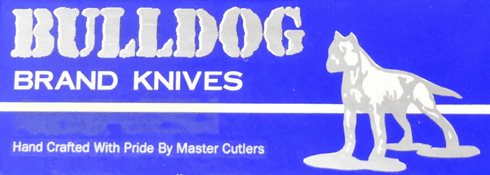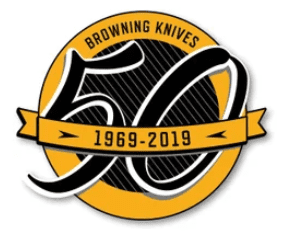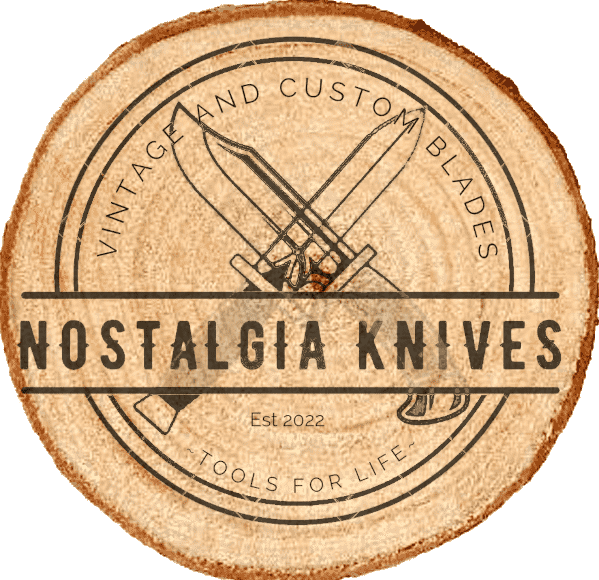Crafting Folding Pocket Blades: An Artisanal Process of Precision and Skill.
Crafting Folding Pocket Blades: An Artisanal Process of Precision and Skill
The manufacturing of folding pocket blades is a meticulous process that combines age-old craftsmanship with modern engineering techniques. From the selection of materials to the final assembly, each step plays a crucial role in producing a high-quality folding pocket knife. Let’s take a journey through the fascinating process of crafting these versatile and iconic tools.
The foundation of any exceptional folding pocket blade lies in the careful selection of materials. High-quality steel is a primary consideration, chosen for its durability, corrosion resistance, and edge retention. Some manufacturers opt for premium alloys that undergo specialized heat treatments to enhance the blade’s performance characteristics.
The chosen steel is then subjected to the forging process, where it undergoes controlled heating and shaping. Skilled blacksmiths or modern CNC machines carefully shape the blade, creating the desired profile. This stage is crucial for establishing the blade’s strength, sharpness, and overall functionality.
Once the basic shape is achieved, the blade undergoes precision grinding to refine its edge geometry. This process is vital for achieving a razor-sharp edge that is both effective and easy to maintain. Skilled craftsmen use grinding wheels of varying grits to achieve the desired sharpness before honing the blade to perfection.
Simultaneously, the handle of the folding pocket knife is crafted. Handles can be made from a variety of materials, including wood, bone, metal, or modern composite materials. The handles are shaped to provide ergonomic comfort and house the folding mechanism. Attention is paid to details such as texture, grip, and aesthetic appeal.
The heart of any folding pocket knife is its folding mechanism. Various designs exist, including slip joints, lockbacks, liner locks, and frame locks. Each mechanism requires precise engineering to ensure smooth operation, secure locking, and durability. The interaction between the blade and the handle is fine-tuned to create a seamless and reliable folding action.
With both the blade and handle components ready, the knife is meticulously assembled. The fitting process ensures that all parts align seamlessly. The folding mechanism is integrated, and the knife undergoes rigorous testing to ensure that it opens and closes smoothly, locks securely, and meets the manufacturer’s quality standards.
Quality control is a continuous aspect of the manufacturing process. Each knife is subjected to stringent tests to assess its sharpness, durability, and overall functionality. This phase may involve edge retention tests, impact resistance assessments, and meticulous inspections to identify any imperfections in the final product.
The finishing touches elevate a folding pocket blade from a functional tool to a work of art. This may involve polishing the blade, embellishing the handle with intricate designs, and applying protective coatings to enhance durability. Some manufacturers also engrave or mark their knives with logos, serial numbers, or other identifiers.
Crafting folding pocket blades is a blend of artistry, engineering, and skilled labor. From the careful selection of materials to the final assembly, each step in the manufacturing process contributes to creating a tool that is not only functional but also a testament to the enduring appeal of finely crafted cutlery. Whether in the hands of a collector or an everyday user, a well-made folding pocket knife reflects the time-honored traditions of craftsmanship and the precision of modern manufacturing.
Bulldog Knives

Bulldog Knives
Bulldog Brand Knives has carved a distinctive niche in the world of cutlery, blending traditional craftsmanship with modern precision. Established in 1978, the brand has become synonymous with quality, reliability, and a commitment to preserving the rich legacy of knife-making. Let’s delve into the history of Bulldog Brand and explore the factors that have contributed to its enduring success.
Bulldog Brand was founded in the late 1970s by veteran knife enthusiast and entrepreneur, Charles A. Booz. Recognizing the growing demand for high-quality, American-made knives, Booz set out to create a brand that would capture the essence of traditional craftsmanship while embracing modern production techniques.
The Bulldog Brand drew inspiration from the storied history of classic pocket knives, particularly those associated with the cutlery-rich region of Solingen, Germany. The brand’s early designs were a nod to the timeless appeal of European-style pocket knives, known for their robust construction and attention to detail.
To maintain the authenticity and quality associated with Solingen, Bulldog Brand established strong ties with skilled craftsmen in the region. Collaborations with Solingen based artisans ensured that each Bulldog knife reflected the heritage and craftsmanship for which the region is renowned.
Bulldog Brand gained popularity by staying true to traditional knife patterns while incorporating modern materials and manufacturing techniques. Classic patterns, such as trappers, congress knives, and stockmans, were given a Bulldog twist, showcasing innovative handle materials, intricate bolsters, and high-quality steel blades.
The brand’s commitment to craftsmanship and limited production runs has made Bulldog Brand knives highly sought after by collectors. The knives often feature unique handles, commemorative designs, and special etchings, adding an element of exclusivity that appeals to avid knife enthusiasts.
In the early 2000s, Bulldog Brand underwent a change of ownership, with the rights acquired by another respected name in the knife industry. The new ownership continued to uphold the legacy of Bulldog Brand, ensuring that the brand’s commitment to quality and craftsmanship remained unchanged.
Today, Bulldog Brand continues to produce knives that honor its heritage while adapting to the evolving needs of the market. The brand’s catalog includes a diverse range of pocket knives, fixed blades, and specialty knives, catering to both collectors and users who appreciate the blend of tradition and innovation.
Bulldog Brand Knives stands as a testament to the enduring appeal of traditional craftsmanship in the modern era. With a history rooted in heritage, a commitment to quality, and a nod to the classic designs of yesteryear, Bulldog Brand remains a respected name among knife enthusiasts, ensuring that the legacy of fine cutlery endures for generations to come.
Browning Knives

Browning Knives
Browning, a name synonymous with firearms, hunting, and outdoor gear, has a rich history that extends to the world of knives. Browning Knives, a division of Browning, is a testament to the brand’s commitment to quality, innovation, and a deep understanding of the needs of outdoor enthusiasts. This page explores the fascinating history of Browning Knives, tracing its roots and highlighting the key milestones that have shaped its legacy.
Browning, originally known for its firearms, officially entered the cutlery market with the introduction of Browning Knives. The company’s dedication to producing reliable and high-performance tools seamlessly transitioned into the realm of knives. The early years were marked by a focus on crafting knives that catered to the demands of hunters, sportsmen, and outdoor adventurers.
Browning Knives quickly gained recognition for collaborating with some of the most respected knife designers in the industry. These partnerships resulted in the creation of knives that not only embodied Browning’s commitment to functionality but also showcased cutting-edge designs. The collaboration with custom knife makers brought a touch of artistry to the practical world of outdoor tools.
As technology advanced and consumer demands evolved, Browning Knives stayed at the forefront of innovation. The brand incorporated state-of-the-art materials and manufacturing techniques to enhance the performance and durability of its knives. From advanced blade steels to ergonomic handle designs, Browning Knives continued to push the boundaries of what outdoor knives could achieve.
Browning Knives expanded its product range to cater to a diverse audience. Whether it’s a classic folding pocket knife, a rugged fixed-blade for hunting, or a tactical knife designed for military and law enforcement use, Browning Knives offers a comprehensive selection to meet the needs of various users.
The quality and craftsmanship of Browning Knives have not gone unnoticed. The brand has received accolades and awards for its contributions to the knife industry. Recognition from experts and enthusiasts alike further solidifies Browning Knives’ reputation as a trusted name in the world of cutlery.
Central to the success of Browning Knives is its unwavering commitment to quality. Each knife undergoes rigorous testing to ensure it meets the brand’s high standards. Whether it’s the choice of materials, attention to detail in craftsmanship, or the rigorous testing procedures, Browning Knives continues to uphold a legacy of excellence.
As Browning Knives continues to evolve, it remains deeply rooted in its heritage of providing reliable tools for outdoor enthusiasts. The legacy of Browning Knives is not just a testament to its past achievements but also a promise to deliver exceptional knives for generations to come.
Browning Knives has carved its own niche in the cutlery world, combining a rich heritage with a forward-thinking approach to design and technology. For those who appreciate quality, reliability, and innovation, Browning Knives remains a go-to choice for a wide range of outdoor and everyday cutting needs.
Boker Knives

Boker Knives
Boker, a name synonymous with precision, craftsmanship, and heritage, has been a stalwart in the world of knives for well over a century. Founded in Solingen, Germany, the “City of Blades,” Boker has etched its name in the annals of cutlery history as a brand that seamlessly combines traditional craftsmanship with innovation.
The story of Boker knives dates back to the late 19th century when Heinrich Boker, a well-established toolmaker, founded the Heinr. Boker & Co. cutlery factory in 1869. The company began its journey by producing sabers and other edged tools for use in the military and agricultural sectors. As the demand for quality knives grew, Boker evolved to meet the needs of a changing market.
In the late 19th and early 20th centuries, Boker expanded its operations beyond Germany, establishing a branch in New York to cater to the American market. This move marked the beginning of Boker’s international presence and laid the foundation for its global reputation for excellence.
The tumultuous periods of the World Wars presented challenges for Boker, as with many companies during that time. The Solingen facility was heavily damaged during World War II, leading to the temporary suspension of knife production. Post-war, the Boker family faced the daunting task of rebuilding the brand and the Solingen factory. This period of resilience and recovery solidified Boker’s commitment to its legacy.
The iconic Boker tree brand logo, featuring the giant chestnut tree, was introduced in the 17th century and has become a symbol of the brand’s commitment to quality and tradition. The Tree Brand logo is proudly displayed on Boker knives, signifying a mark of authenticity and craftsmanship.
Boker has always been at the forefront of cutlery innovation. Over the years, the company introduced numerous groundbreaking designs and manufacturing techniques. From classic pocket knives to modern tactical blades, Boker’s diverse range of products caters to the needs of collectors, outdoor enthusiasts, and professionals alike.
Boker has collaborated with renowned knife designers, further enriching its product offerings. Limited-edition releases, often featuring unique materials and intricate craftsmanship, have become highly coveted among collectors, adding an element of exclusivity to the brand.
Boker knives are renowned for their exceptional quality and durability. The brand’s commitment to using high-quality materials and employing skilled craftsmen ensures that each knife meets the exacting standards that have defined Boker throughout its history.
With a legacy that spans generations, Boker knives continue to embody the perfect marriage of tradition and innovation. From the historic Solingen factory to the international stage, Boker has remained true to its roots while adapting to the ever-changing landscape of the cutlery industry. Whether you’re drawn to the timeless elegance of a classic Boker pocket knife or the precision of a modern tactical blade, owning a Boker knife is a testament to holding a piece of cutlery history in your hands.
Blackjack Knives

Blackjack Knives
Blackjack Knives is a brand that holds a storied history in the realm of cutlery. Established with a commitment to producing high-quality blades, the brand has become synonymous with rugged durability, innovative design, and a dedication to meeting the demands of both collectors and outdoor enthusiasts.
The roots of Blackjack Knives trace back to the late 1980s when the company was founded by knife designer and entrepreneur Mike Stewart. Inspired by a passion for knives and a vision for creating tools that could withstand the rigors of outdoor use, Stewart set out to establish a brand that would be known for its reliability and craftsmanship.
From the outset, Blackjack Knives distinguished itself by placing a strong emphasis on the quality of materials and craftsmanship. The early knives produced by the company were marked by their robust construction and attention to detail, catering to the needs of military personnel, law enforcement, and avid outdoors-men.
One of the defining moments in Blackjack’s history was the introduction of the Original Series. These knives were crafted with a combination of classic design elements and modern manufacturing techniques, resulting in blades that were not only aesthetically pleasing but also highly functional. The Original Series remains a cornerstone of Blackjack’s legacy and continues to be cherished by collectors.
Blackjack Knives has a history of collaborating with prominent knife designers, further enriching its product lineup. The brand has produced knives in partnership with acclaimed designers such as Ken Warner, who brought a fresh perspective to the Blackjack catalog. These collaborations have yielded knives that showcase a fusion of innovative design and practical utility.
The Blackjack brand has experienced periods of change, including a hiatus from production. However, in the early 2000s, the brand saw a resurgence under new ownership. This re-invigoration brought a renewed focus on upholding the standards of quality and innovation that had been synonymous with Blackjack Knives since its inception.
Today, Blackjack Knives continues to uphold its legacy of excellence. The brand’s product range includes a diverse array of knives, from classic fixed blades to modern folding knives. Each knife is crafted with precision and attention to detail, reflecting the brand’s commitment to providing tools that can be relied upon in the most demanding situations.
The history of Blackjack Knives is one of evolution, resilience, and a steadfast commitment to quality. From its founding years to its resurgence under new ownership, the brand has consistently delivered knives that appeal to collectors and users alike. With a legacy forged in heritage and craftsmanship, Blackjack Knives remains a respected name in the world of cutlery, a testament to the enduring appeal of knives that are as functional as they are beautifully crafted.

